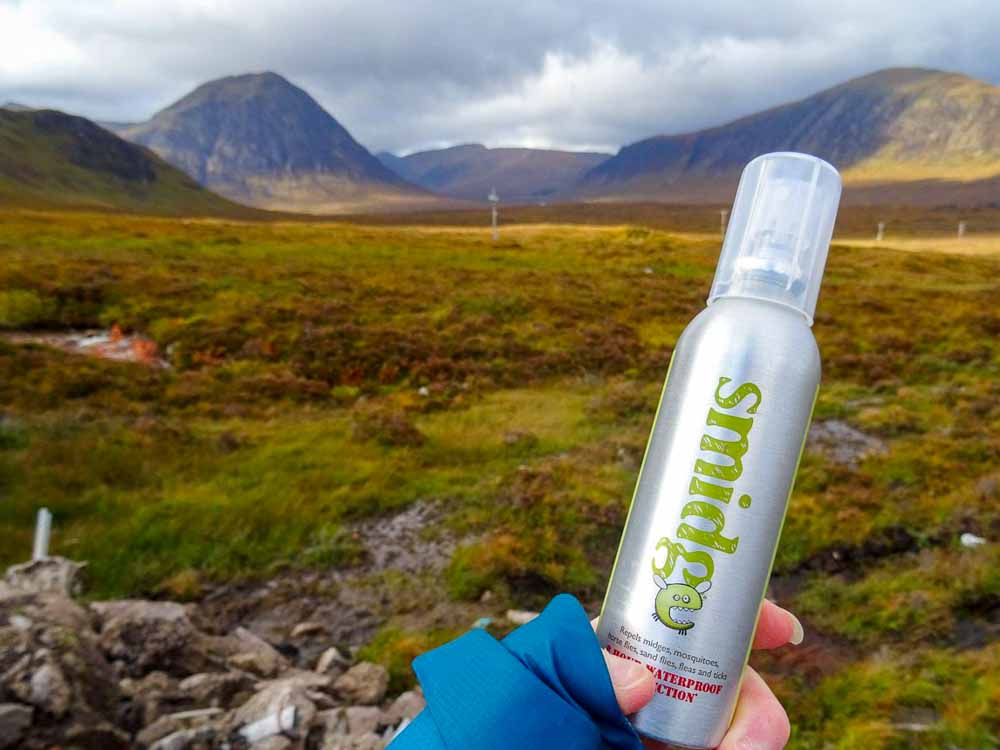How to Prepare For Your First Walking Holiday
I have a confession to make … Before joining Absolute Escapes, I was a “march uphill, bag Munro, march back down” kind of walker.
However, since discovering many fantastic walking trails, from the Cateran Trail to the Thames Path, I’ve been converted. I now find joy in following a walking trail and taking in the scenery that these routes guide you through.
Having gone from a total novice to an advocate of long-distance walks, I’ve picked up a couple of useful tips for those looking to get started on their first long-distance walking holiday.

Planning
Choose the right trail
With over 50 long-distance walking trails in the UK & Ireland, there’s something out there for everyone. It is important to pick a walk that suits your interests, time frame, abilities and most importantly, your comfort zone. For ocean lovers, like myself, you might enjoy a coastal walk such as the Arran Coastal Way or Berwickshire Coastal Path or a section of the stunning South West Coast Path.
For those with a love of mountainous scenery, the iconic West Highland Way or the rolling hills of the Hadrian’s Wall Path would be a good place to start.
As well as your interests, it is important to consider how much time you have for your walking holiday and how many days you would feel comfortable walking for. From personal experience, I’d recommend a week’s walking with no more than 15 miles of walking per day. Ideally, add a rest day to the middle of your walk so that you have time to reflect on your journey, and enjoy a well-earned break for your legs and mind!

Consider your navigation skills
Whilst most long-distance walking trails are well signposted, it is always important to have some basic navigation skills, in case you lose your way or want to check your progress throughout the walk.
I’d recommend that unless you’re a confident navigator, you select a well-signposted walk (Absolute Escapes includes information on way-marking in the overviews of our walking holidays). National Trails benefit from official way-marking which is well maintained, making it easy to follow for even the most compass-shy walkers.
Additionally, on more popular walking routes you’re likely to encounter other walkers on the route – which is usually a good indication you’re going the right way, unless they are lost too, of course!

Packing
Choose your socks and shoes wisely
It is important to consider the type of trail, you’re going to be walking if it’s mainly on well-maintained paths, sturdy walking trainers may be a good option. For walks that are wetter and less maintained, something sturdier such as leather walking boots are good to keep your feet dry and avoid the dreaded blisters that could cause you discomfort further along the way.
A more often overlooked component of a walker’s outfit is socks – last year’s Christmas socks won’t cut it. Opt for specially designed walking socks that offer additional padding on the more sensitive areas of your feet. I was pleasantly surprised to find these now come in a range of colours and styles, so you’ll still be in fashion whilst you march your way along your chosen walking trail.
Many modern walking socks also come with features such as waterproofing, anti-rubbing, or extra insulation.

Waterproofs: Non-negotiable
A pair of waterproof trousers and a waterproof jacket will take up so little space in your day pack that you won’t even notice they are there. You will, however, notice if you get caught out in a freak rain shower and don’t have any waterproofs with you.
Spending a day walking in soggy walking trousers is to be avoided at all costs. Pack your waterproof layer every day!
The importance of snacks!
After a full cooked breakfast, the last thing you’ll be thinking about is more food, but heed my warning – pack snacks! Walkers can be on their feet from anything between 3 to 9 hours in a day, and that kind of leg work requires sustenance.
My approach to snacks has always been “more is more”: it’s better to overpack on snacks (the weight of which will reduce as you eat them) than realise on a remote hilltop that you’re rather peckish.
It also allows for a breather and for a moment in which you can take in the scenery around you.

Before you start
Read your Information Pack
You’ve chosen your walking trail, brushed up on your compass reading skills, packed your waterproofs and have numerous snacks in your bag – it is almost time to get walking! But first, take a moment to read the literature you’ve been provided with for your walk.
Personally, I tend to peruse my map, guidebook and Information Pack with a beer the evening before the walk. It allows me to have an idea of what I should expect the next day. and gives me the chance to make use of any special recommendations in the literature, such as making dinner reservations in advance or take note of the nearest shops to stock up on supplies.

Check the weather forecast and protect your skin
Whilst reading through the walk materials now is a good time to check the weather forecast for the next day and consider what you might wear. I’m always keen to wear layers to allow for as many outfit changes as possible! Layers also allow you to adapt your outfit to the weather conditions and keep yourself at a comfortable temperature.
Even if the forecast looks completely grey and overcast, always wear some form of sun protection while you walk. The sun’s rays can travel through even the thickest of clouds, and as you’ll be spending the day outside it’s important to protect your skin.
Speaking from experience, carrying a day-pack on sunburnt shoulders does not make a happy walker.

Heed off midges and bugs
If you’re walking in Scotland you’ll no doubt have heard of the infamous midge: pesky little flies that give itchy bites and can be quite a nuisance. Protect yourself from these by using an insect repellant and covering your skin as much as possible.
In high midge season, a questionable fashion option is a midge-net jacket, which allows the air to get to you, but prevents the midges from being able to bite.
You’re now ready to get walking!

On your walk
Consider the Countryside Code
Whilst walking trails are purposely designed to not run into any issues with regards to access, it is still important to familiarise yourself with the Outdoor Access Code of the area you’re walking in. This gives helpful guidance on walking in the outdoors and also tips on what to do when you encounter diversions or nosy locals, such as curious cows.
The Scottish Outdoor Access Code and equivalents in England, Wales and Ireland can be found here:
The Countryside Code – England & Wales
The Countryside Code – Ireland

Flora and Fauna
As you walk, you’re likely to encounter many beautiful flowers and plants, and also some interesting birds and animals.
To save yourself the time of trying to memorise what they all look like, why not bring a bird-watching book or plant identification guide? Save yourself space in your bag by downloading one of the many nature identification apps that are available online. That way you’ll be able to find out there and then what it is you’ve seen, rather than spending the next three weeks googling a vague description of the bird, in the hopes to be able to identify it.
Nature enthusiasts might also benefit from packing a pair of lightweight binoculars – who knows what you’ll spot!

Hopefully, armed with these tips, you’ll be all set for a successful first walking holiday, however, above all else, don’t forget to have fun and enjoy the beauty of nature around you!
Pippa Robson
P.S. Considering planning a walking holiday? Absolute Escapes offers a wide range of award-winning walking holidays across the UK & Ireland with something for everyone. Get in touch with one of our travel specialists to find out more and get your boots on the trail!


